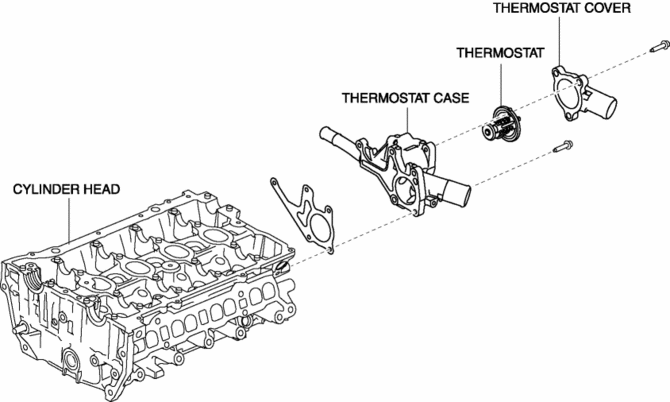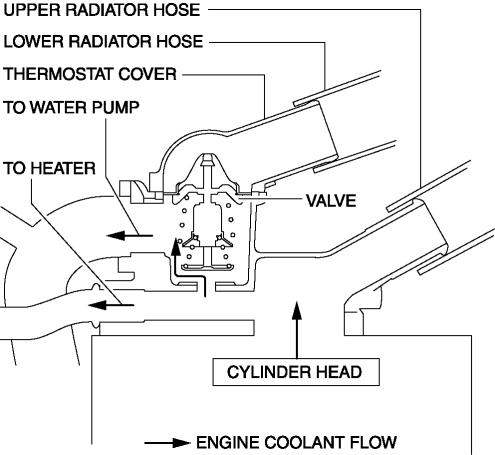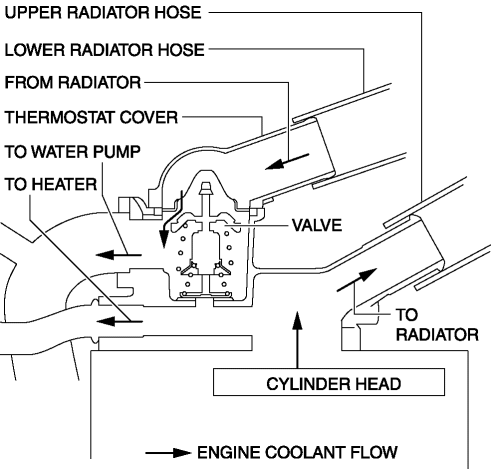Mazda CX-5 Service & Repair Manual: Thermostat
Purpose, Function
-
When the engine coolant temperature is low, the thermostat blocks the engine coolant passage between the radiator and engine. As a result, because engine coolant cycles without passing through the radiator, warming is promoted.
Construction
-
The thermostat is installed to the rear part of the cylinder head.

-
The thermostat has the following parts:

Operation
1. When the engine coolant temperature decreases, the thermostat valve closes and engine coolant circulates without passing through the radiator.

2. When the engine coolant temperature is 80.5—83.5°C, the thermostat valve starts to open and the engine coolant passed through the radiator flows to the engine.

 Thermostat Removal/Installation
Thermostat Removal/Installation
WARNING:
Never remove the cooling system cap or loosen the radiator drain plug while
the engine is running, or when the engine and radiator are hot. Scalding engine
coolant and steam may ...
 Emissions
Emissions
...
Other materials:
Oil Pump [Skyactiv G 2.0]
Outline
The oil pump has a mechanism for feedback control of oil pressure. As a result,
an oil pressure increase of more than the set pressure is suppressed and oil
pump drive resistance is reduced. In addition, because the set pressure can
be changed (oil pressure two-step control) ...
Towing
Trailer Towing (U.S.A. and Canada)
Your Mazda was designed and built primarily to carry passengers and cargo.
If you tow a trailer, follow these instructions because driver and passenger
safety depends on proper equipment and safe driving habits. Towing a trailer will
affect handling, braking, ...
Precaution [Dynamic Stability Control (DSC)]
1. The ABS warning light and/or brake system warning light and/or TCS/DSC indicator
light and/or TCS OFF indicator light illuminate even when the system is normal.
Warning lights/Indicator lights that may illuminate and/or flash
Cases in which the light may ill ...
